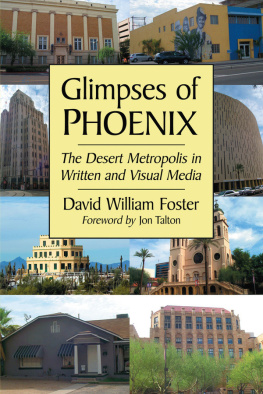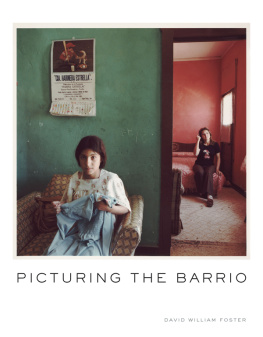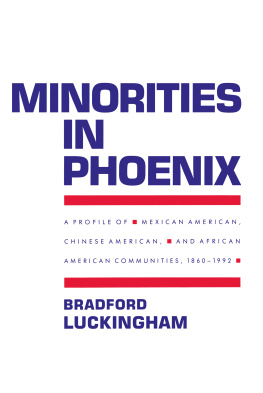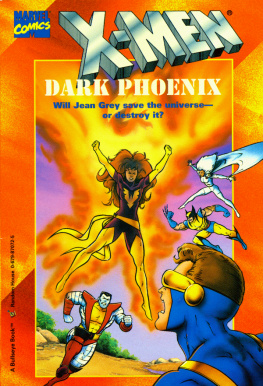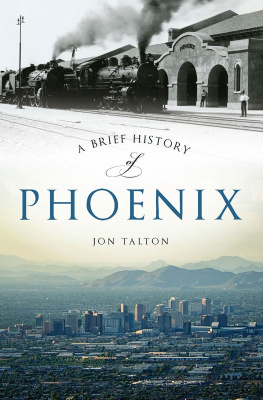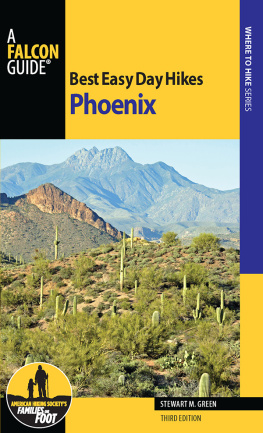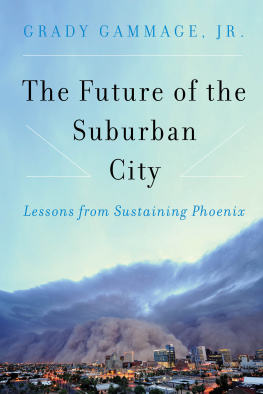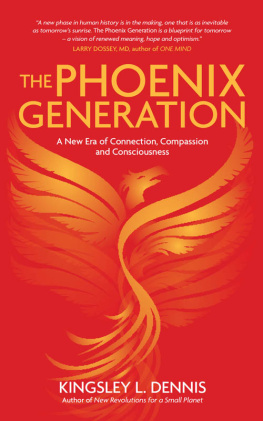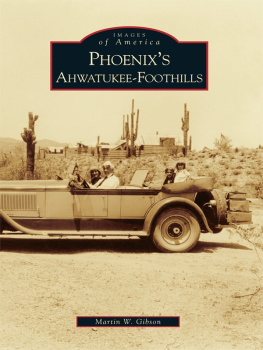
Also by DAVID WILLIAM FOSTER
Urban Photography in Argentina: Nine Artists of the Post-Dictatorship Era (McFarland, 2007)
Bibliography in Literature, Folklore, Language and Linguistics: Essays on the Status of the Field (coeditor, James R. Kelly, McFarland, 2003)
Glimpses of Phoenix
The Desert Metropolis in Written and Visual Media
DAVID WILLIAM FOSTER

McFarland & Company, Inc., Publishers
Jefferson, North Carolina, and London
All photographs are by the author unless indicated otherwise. Erma Bombeck: The Phoenix Suburban Underbelly was originally published in a slightly different version in Journal of Popular Culture 45.1 (2012): 2740. Truthful Misrepresentations: Steve Benson Draws Phoenix originally appeared in Studies in American Humor new series 3.21 (2010): 2945. Phoenix, Say What? Urban Landscapes in the Chronicles of Laurie Notaro originally appeared in Cuadernos de litertaura inglesa y norteamericana 11.12 (2008): 6983. Desert Noir: The Detective Fiction of Jon Tarlton originally appeared in shorter form in the Rocky Mountain Review 61.1 (Spring 2007): 7383. Reprinted by permission of the copyright owner, The Rocky Mountain Modern Language Association. The portion of Out of the Barrio: Stella Pope Duartes Let Their Spirits Dance about La Sonorita was originally published as La Sonorita: Survival of a Chicano Barrio in Conuencia 27.1 (2011): 21218. The rest of the essay originally appeared in a shorter version in the Bilingual Review 27.2 (2003): 17179. Phoenix in Guillermo Reyess Places to Touch Him originally appeared in Latin American Theatre Review 43.1 (2009): 7186. Phoenix as Dystopia in Cherre Moragas Hungry Woman originally appeared in a much shorter version in the Hispanic Journal 23.2 (2002 [i.e., 2004]): 91101. The portions of the essay on Van Buren Street originally appeared in Can You Get There on Van Buren? Urban Flashes: Phoenix, Arizona, Border-lines 2 (2008): 422.
LIBRARY OF CONGRESS CATALOGUING DATA ARE AVAILABLE
BRITISH LIBRARY CATALOGUING DATA ARE AVAILABLE
e-ISBN: 978-1-4766-0221-9
2013 David William Foster. All rights reserved
No part of this book may be reproduced or transmitted in any form or by any means, electronic or mechanical, including photocopying or recording, or by any information storage and retrieval system, without permission in writing from the publisher.
On the cover: clockwise from top left Scottish-rite Masonic Temple, original Channel 5 studios, original IBM building, St. Marys Basilica, first Phoenix City Hall, Winnie Ruth Judd murder house (photographs by the author); Tovrea Castle (iStockphoto/Thinkstock); Luhrs Tower (photograph by the author)
McFarland & Company, Inc., Publishers
Box 611, Jefferson, North Carolina 28640
www.mcfarlandpub.com
Foreword: Writing Phoenix
by Jon Talton
In 2011, video of a dust storm descending upon Phoenix captivated television audiences and Internet viewers across America. This majestic, unnerving ten-thousand-foot-tall brown mass eating up the subdivisions seemed like something out of science ction. It even assumed an exotic name: a haboob. As a fourth-generation Arizonan who was living in Seattle at the time, I elded questions from many friends and acquaintances about this seemingly strange new phenomenon. Was it dangerous? A result of climate change? I was, they said, fortunate not to have been there and confronted this menacing novelty, the haboob.
To be sure, building a metropolitan area of more than fteen hundred square miles and four million people in a hostile desert has changed the weather all by itself. The summers are hotter and last longer. The super-heated concrete can make the storms more violent. And the region faces a risky future from climate change. But when I watched the video and its successorsfor there was a haboob craze in the aftermath of that rst showingI saw just another Arizona dust storm, a commonplace in the summer monsoon season. And when I was growing up in Phoenix, nobody used the term haboob. That word originates in the Sahara. Our weather events were always called dust storms. Still, it was an instructive moment.
Phoenix has long recorded some of the fastest population growth in America. It also sees a great deal of population churn, people moving in and out without staying long. Most white newcomers move to new areas of the sprawling metropolis, to subdivisions of look-alike houses in master planned communities and, for those with means, gated properties. They drive everywhere. Shopping is done at familiar chain stores in brand-new shopping strips or malls. The fast-food outlets and drug stores are in the same style of building as one would nd in Omaha or Des Moines, with perhaps some stucco slapped on. Suburban zoning and the price-points of house builders ensure a high degree of segregation by income, class, and race. It is a prime example of the throwaway built environment called the geography of nowhere, by social critic James Howard Kunstler. A great deal of self-selection has also taken place. Suburban Phoenix is the big sort identied by author Bill Bishop in a book of the same name, where those of like minds and life experiences cluster together. As a result, it is highly conservative, suburban, Midwestern, and almost tribal in its exclusionary character. Exclusive is a frequently used adjective, especially in wealthy north Scottsdale. All this is cloaked by the local boosters promise of a resort lifestyle and no need to shovel sunshine.
One peculiar result of this great Midwestern migration is that home for many residents, including the massive retiree cohort and the very wealthy, is where they came from, not Phoenix. The large suburbs surrounding the city, or at least their elected ofcials, resent even using the name Phoenix to describe the metropolitan area, preferring the amorphous Valley. As the funding difculties facing local arts and philanthropic organizations attest, most dont adopt Phoenix as their own, however much they enjoy its delightful winters, golf courses, and abundant sunshine. They send their money back home to the symphony or museums in Minneapolis, Chicago, or Cincinnati. When they die, they choose to be buried there as well. Politically dominant in the region if not the city itself, they act as a veto elite against most efforts at civic betterment unless they involve building more freeways.
From the new, look-alike built environment and the monoculture of suburban sprawl, to the lack of civic connections, many nominal Phoenicians glide through their lives under the impression that the city has little or no past and no distinctive customs, traditions, and cultures. So its not surprising that haboob would be appended with barely a protest to a timeless and distinctive occurrence in the Sonoran Desert. It reminds me of when I returned to Phoenix in the 2000s and even the news media would term a location downtown even though it was miles from the real downtown. I wouldnt do that in their hometowns; for example claiming that Winnetka was in the Chicago Loop. Yet when I would raise these protests to reporters, editors and producers, they were invariably dismissed. Phoenix has no history, they would say.
They could not be more wrong.
David William Fosters Glimpses of Phoenix is a welcome antidote. Phoenix is Americas least-examined big city. Yet it is rich in history, national consequence, and a storehouse of many conicting, competing, and blending cultural traditions that make it a compelling metropolis. These have been good to me as a mystery writer, my muses in creating the six novels in the David Mapstone mystery series. The city is a conscious character in each of these books. I also tried to bring this sensibility to my writing during the seven years that I worked as a columnist for the
Next page
